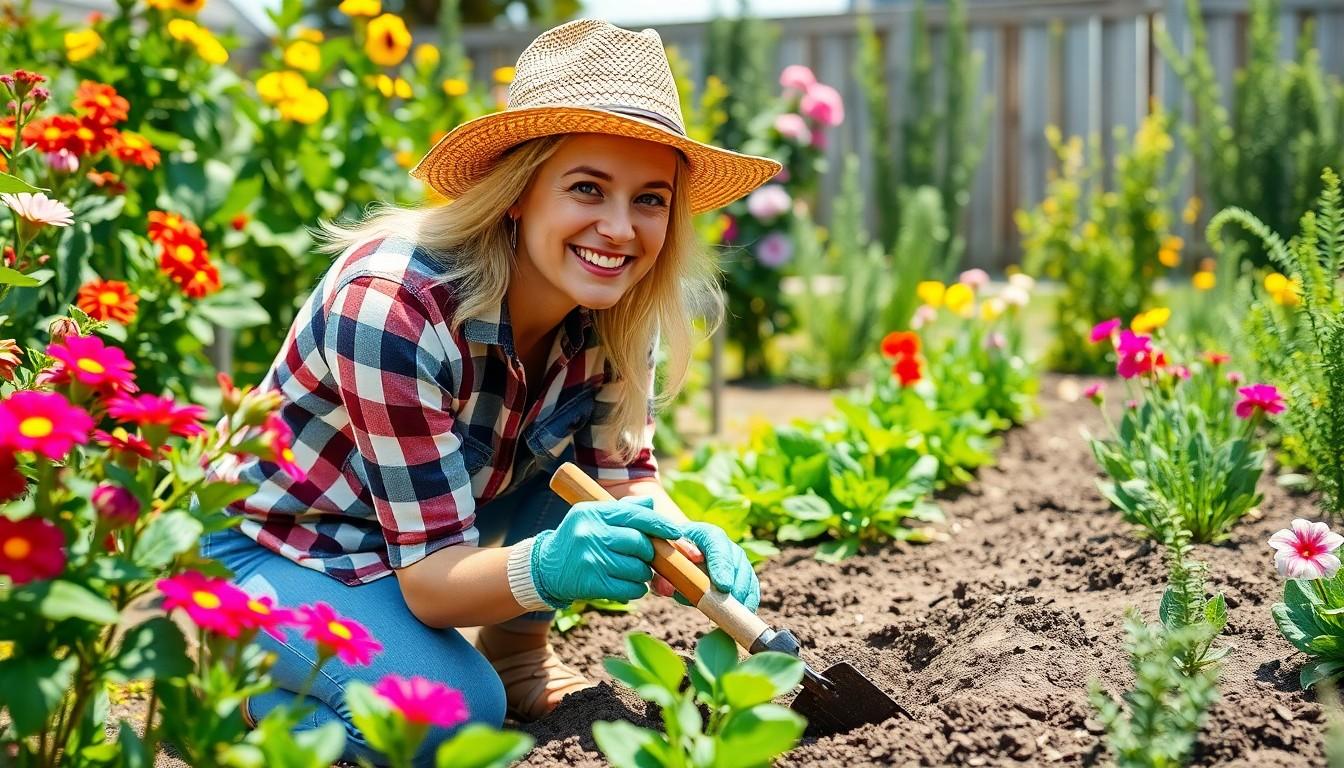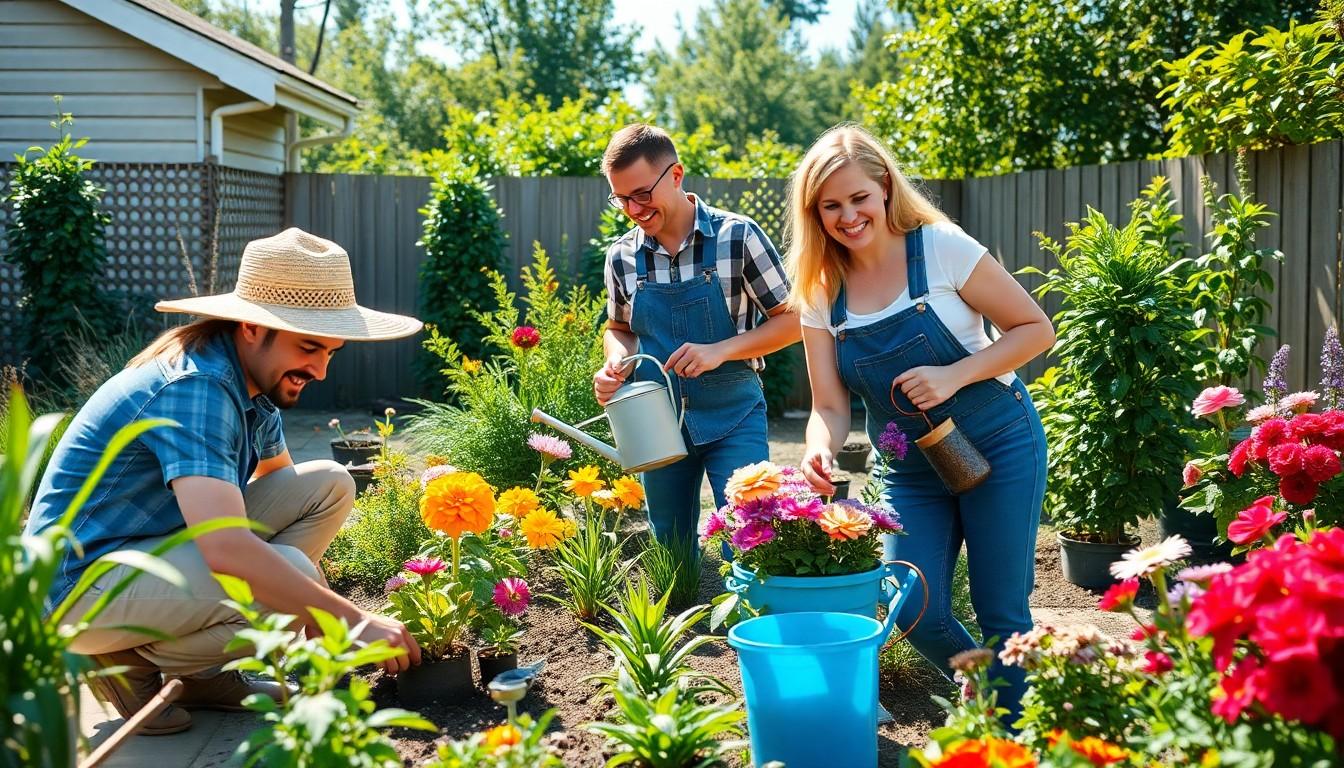Gardening isn’t just about digging in the dirt and hoping for the best. It’s a vibrant world filled with quirky terms and slang that can make anyone feel like a green-thumbed guru. From “deadheading” to “composting,” these phrases add a sprinkle of fun to the toil of planting and pruning. Understanding gardening slang can elevate conversations from basic chit-chat to expert-level banter that impresses friends and neighbors alike.
Ever found yourself puzzled by a gardener’s lingo? You’re not alone. But fear not! This guide will unravel the meanings behind the most popular gardening slang, making you the go-to expert in your circle. So grab your trowel, put on your sun hat, and prepare to dig deep into the delightful language of gardening. Who knew learning could be this much fun?
Overview of Gardening Slang
Gardening slang comprises unique terms and phrases used by gardening enthusiasts. Understanding this lexicon enriches communication among hobbyists and professionals alike. Terms like “deadheading” relate to the process of removing spent flowers to encourage blooming, highlighting a common practice in gardening.
Another significant term, “composting,” refers to the practice of recycling organic waste. This process transforms kitchen scraps and garden debris into nutrient-rich soil additives. Utilizing compost not only benefits individual gardens but also supports environmentally sustainable practices.
“Mulch” also deserves attention; it pertains to organic or inorganic materials used to cover soil. This practice helps retain moisture, suppress weeds, and improve soil health. Gardeners often use this term in discussions about garden maintenance and plant health.
“Perennial” indicates plants that live for more than two years. They offer enduring beauty to gardens, contrasting with annuals, which complete their lifecycle in a single growing season. Knowing the difference assists in planning vibrant, diverse gardens.
Conversely, terms like “hardiness zone” reference specific areas where certain plants can thrive based on climatic conditions. This classification assists gardeners in selecting appropriate plants for their regions.
Understanding these terms and more greatly enhances one’s gardening experience. With every gardening conversation, these phrases add depth and connection among enthusiasts, fostering a community spirit. Gaining familiarity with this slang leads to more fruitful discussions and a deeper appreciation for the art of gardening.
Common Gardening Terms

Understanding gardening slang can enhance communication among enthusiasts. Here are some key categories of terms used in the gardening world.
Plant-Related Slang
“Companion planting” refers to strategically pairing plants to improve growth and deter pests. “Zone pushing” describes planting species outside their recommended hardiness zones for better success in specific conditions. Another term, “monoculture,” defines the practice of growing a single crop in a given area, which can lead to pest issues. “Heirloom” signifies traditional varieties of plants that have been preserved over generations, offering unique flavors. Lastly, “seed-starting” involves germinating seeds indoors to extend the growing season.
Tool and Equipment Slang
“Garden spade” is a versatile tool used for digging and turning soil. Meanwhile, “hoe” helps in weeding and cultivating the ground. The term “trowel” describes a small hand tool perfect for planting or transplanting. “Pruner” refers to shears designed for trimming and shaping plants effectively. “Wheelbarrow” facilitates the transportation of soil, plants, and tools across the garden. Every tool has its place, contributing to efficient gardening practices.
Importance of Understanding Gardening Slang
Understanding gardening slang boosts communication in both casual and professional settings. Familiarity with terms like “deadheading” and “companion planting” allows for clearer discussions about gardening techniques and practices. Experts and enthusiasts can share insights more effectively, creating a richer dialogue around shared interests.
Enhancing Communication Among Gardeners
Effective communication among gardeners stems from a common language of specific jargon. This shared vocabulary facilitates the exchange of ideas and tips, making it easier for individuals to seek advice or share experiences. Knowing gardening slang streamlines conversations, whether discussing pest control methods or the best tools for pruning. Clarity and precision in communication lead to better collaboration on community projects or gardening groups.
Building Community and Connections
Building a gardening community relies on the connectiveness fostered by shared terminology. Engaging in discussions using slang terms creates camaraderie among participants. Gardeners often find common ground through these phrases, sparking new friendships and collaborations. Local gardening clubs or online forums often use this slang, not only to enhance understanding but also to strengthen relationships. These connections lead to a supportive environment where individuals can share successes and challenges alike.
Fun Examples of Gardening Slang
Understanding gardening slang adds a layer of enjoyment to the gardening experience, making conversations richer and more engaging. Here are some fun expressions that gardeners frequently use.
Creative Expressions and Their Meanings
“Going to seed” describes when a plant develops seeds, often signaling the end of its productive life. Another lively term, “top dressing,” refers to adding an extra layer of material, like compost or mulch, to the soil surface. “Nipping in the bud” means to stop something at an early stage, particularly pests before they can cause damage. “Drop in the bucket” illustrates a small contribution in the grand scope of gardening, emphasizing efforts to create a lush space. “Green thumb” suggests a natural talent for gardening, highlighting those who thrive in this nurturing activity.
Regional Variations in Gardening Slang
Gardeners across different regions often use unique slang. In the South, “dirt” commonly refers to soil, while in the Northeast, “sod” describes a layer of grass and soil. “Weed whacking” in some areas signifies trimming unwanted plants vigorously, making it specific to that action. Certain communities may refer to heirloom varieties as “heritage” plants, celebrating their cultural significance. In California, the term “xeriscaping” stands out, emphasizing water-efficient landscaping, showcasing the local climate’s influence on terminology.
Conclusion
Embracing gardening slang opens up a whole new dimension for enthusiasts and professionals alike. Understanding these terms not only enhances communication but also enriches the gardening experience. It fosters connections within communities and encourages collaboration among gardeners.
As individuals become more familiar with the unique language of gardening, they’ll find themselves more engaged in discussions and activities. This shared vocabulary not only simplifies conversations but also builds camaraderie among participants. With a little practice, anyone can confidently navigate the vibrant world of gardening slang and enjoy the many benefits it brings to their gardening journey.

